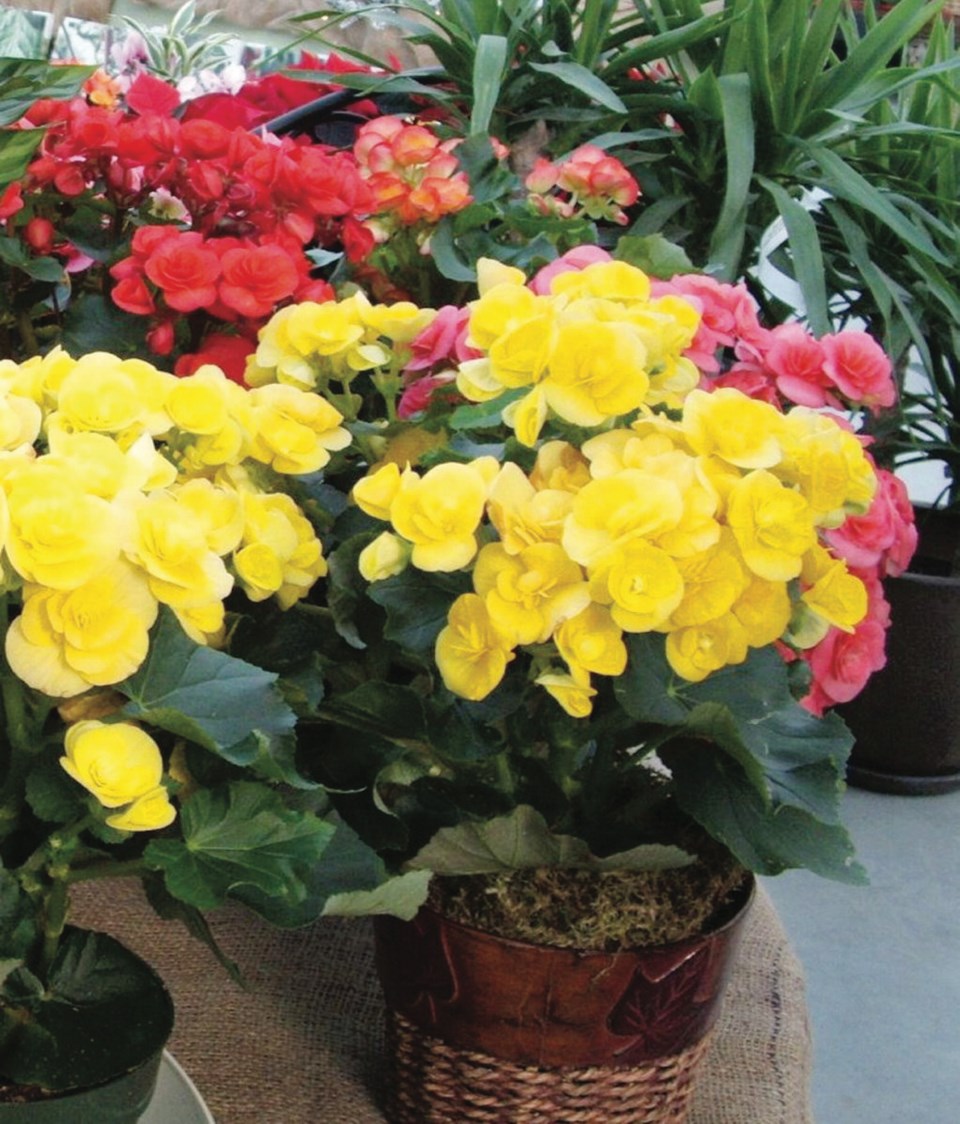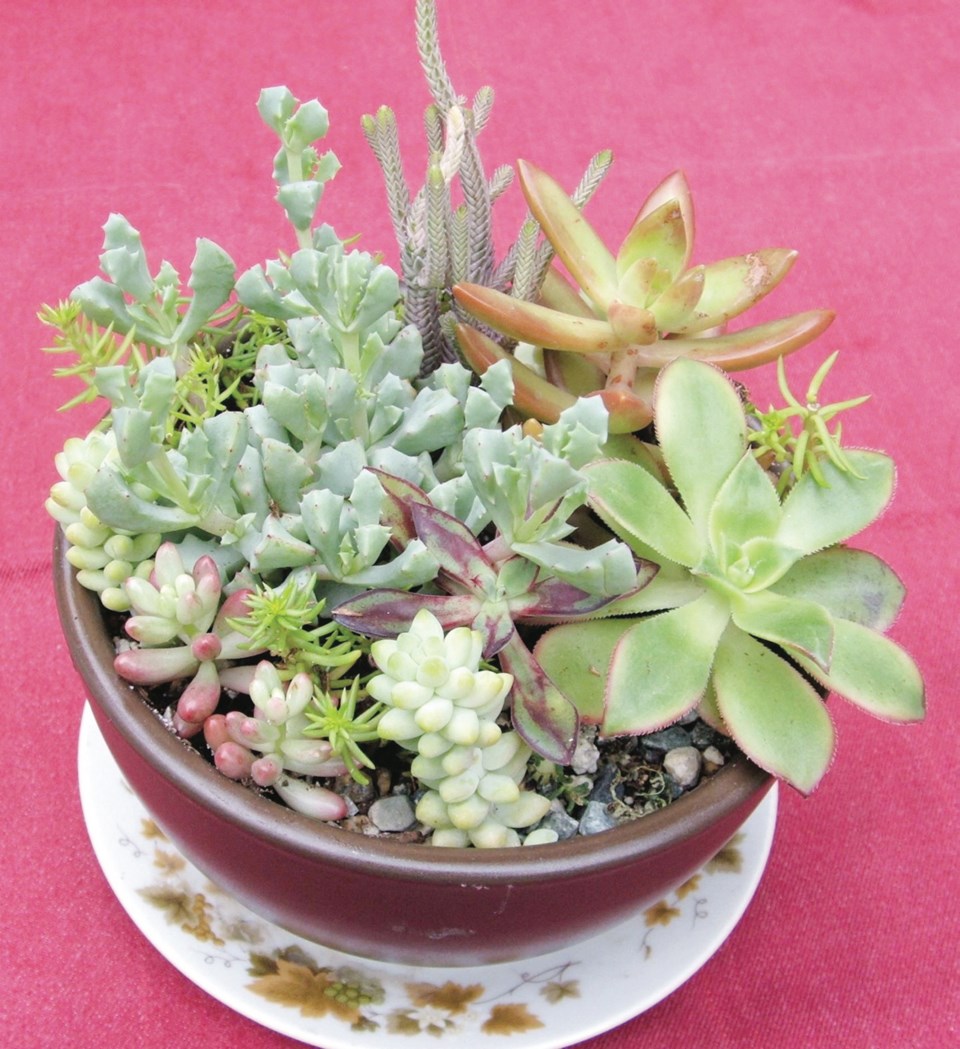My annual late-autumn compulsion to acquire a lively new plant for the kitchen windowsill coincided perfectly last month with an enticing collection of succulents at my local farmers’ market.
Kathy, a grower and avid fancier of all things succulent, had acquired an extensive array of small, used ceramic containers, drilled drainage holes in them and planted each one with an assembly of little succulent plants.
I was drawn immediately to a plain bronze-coloured bowl packed tightly with a wonderful variety of plants, some with red- and maroon-tinged leaves. Some had fleshy leaved rosettes. Some were spiky, others feathery. There were plants with green or red rounded ovals that resembled shiny beads.
Succulents are the ultimate in easy-care indoor plants, as long as they are watered only infrequently, especially in winter. The easiest way to tell whether to water is to lift the container and gauge the soil’s moisture level by weight. Water only when a planting feels noticeably light.
Some garden centres have tables of small succulents as well as tropical foliage plants on display. Choosing a few to plant in a container can be an enjoyable and inexpensive family or children’s project.
Select plants with similar needs — all succulents, for drier conditions, ferns and broad-leaved tropical foliage plants for more evenly moist and humid conditions. Creating a living garden and caring for it could plant the seeds of lifetime gardening in a child.
Festive plants. A container full of succulents is not the usual sort of planting I choose to brighten the kitchen as days become short and dark. I was simply fascinated by the numbers of different plants Kathy was able to squeeze into a small bowl.
I always buy a poinsettia in December for placing at the dining-room window with greenery from the garden. Choosing a poinsettia almost always sets the stage for a spot of delightful dithering.
What to choose? A traditional deep red and green plant, or a pure white? In garden-centre displays, there will likely also be pink, yellow, salmon and cream poinsettias and some with marbling or edging in contrasting colours.
The colourful “blooms” we appreciate in poinsettias are actually modified leaves, called bracts, that surround a cluster of real, small yellow flowers.
Other flowers that we associate with the Christmas season are red and white amaryllis, paperwhite narcissus and, of course, the Christmas cactus. Still, the plant I am most often drawn to as the dark times descend is not one commonly considered a “Christmassy” plant.
Begonia. Though it may not emit a traditional Yuletide aura, the Rieger (elatior) begonia is a star among winter-flowering plants for its beauty and extraordinarily long period of bloom.

These bushy little plants give top value for the money you spend on them, and among them are blooms in white and red, popular Christmas colours, as well as in pink, yellow and some gorgeous bicolours.
When I buy a Rieger begonia in November or December, it’s not at all unusual for the plant to flower non-stop through mid-May. In congenial conditions, six months of bloom can be expected.
These begonias are often thrown out when flowering ceases, but they can be kept to flower again. At the end of the bloom period, cut the stems down to about eight centimetres and let the pruned plant rest, with minimal watering, for a few weeks before repotting and watering to initiate a fresh round of growth and flowering.
Cuttings root easily. Stems removed in cutting back the parent plant can be inserted into a lightweight, fast-draining potting mix and set in bright indirect light for rooting. A loose plastic cover to retain humidity around the cuttings is helpful.
Aim for cuttings about eight cm long, with the bottom cut made immediately below a leaf node. Remove lower leaves before inserting the cutting into a hold made in the potting mix. Firm the cuttings in gently.
Rieger begonias are not fussy plants. They are fine in temperatures between 10 and 20 C and in the brightest possible winter light.
By early May, as sunlight intensifies, the plants might have to be moved from a south-facing window and into bright indirect light.
Water Rieger begonias only when the top layer of soil is dry to the touch and the pot feels light when lifted.



